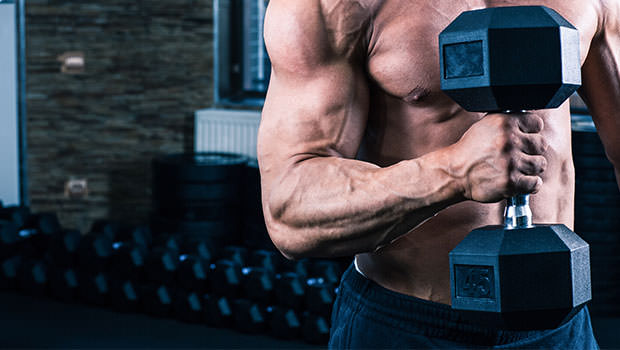A good percentage of the image of a ” beautiful body ” is due to the deltoids, then to the line and shoulder development. In fact, a physique with a well-developed deltoid, but with deficiencies in the arms, pectoral or dorsal, is less perceived as disharmonious than a physique with small shoulders and chest and back arms more prominent.
The deltoid muscle (also called the shoulder) is divided into three bundles called clavicular (anterior), acromial (central), spinal (posterior). The clavicular beam originates from the lateral third of the clavicle, the acromial beam from the acromion and the spinal beam from the inferior margin of the spine of the scapula. All three bundles fit into the deltoid tuberosity. The three muscular bundles, which constitute the shoulder, have in part a synergistic action and in part an antagonistic action.
The deltoid is the most important abductor of the humerus and up to 90° only the acromial beam goes into operation; in addition the clavicular and spinal bundles also function. The clavicular bundle, partially aided by the acromial beam, determines an anteversion of the shoulder, while the spinal beam, always helped by the acromial beam, instead determines a retroversion of the shoulder.
This is important in the movements of the arm because the clavicular beam can circulate the arm adducted and rotated outside; while the spinal beam can extra rotate the arm if it is rotated inside.
The clavicular beam of the deltoid also works significantly with the training of the pectorals; the same is true for the spinal beam that works synergistically with the large backbones. Therefore, it is important to bear in mind that, in the micro weekly training cycle, the training of the deltoids can be combined with the training of the pectoral and backbones.
In fact, in my physical preparation, I do my workouts for the backbones with some exercise to exhaustion of the spinal deltoid, as for example the abductions with flexed bust at 90 °, or with exercises like the rowing torso, keeping the elbow away from the bust , thus shifting the work most in charge of the spinal deltoid with respect to the great dorsal.
The training of the great pectoral instead, I do them with exercises of the clavicular deltoid, doing the frontal lifts with barbell or with dumbbells. The acromial part, instead, which is the part of the deltoid that works synergistically with the other two bundles, can be inserted in the training of both muscle groups: of the chest and of the back; such as an exercise in lateral abductions with dumbbells or cables.
Sometimes I do these exercises several times a week because I have this availability. But if I had to choose to train the deltoids alone in a single micro cycle, I would develop the training in the way I will now point out. I would start with a pluriarticular basic exercise, such as a slow behind with dumbbells or barbells.
However, it should be kept in mind that this exercise is not very suitable for those who have a kyphotic attitude a scapular plane that leads to an extra rotation and hyperextension of the shoulder, creating a critical situation for the joint itself.
In this case, it is better to perform a slow forward. In this basic exercise, there is a fairly global fiber compromise; it is necessary to continue the training working the bundles of the deltoid, as already mentioned above, trying to isolate the work. In particular, for the clavicular beam: front abductions with dumbbells; for the acromial beam: lateral abductions; finally for the spinal beam: abductions at 90°.
The shoulder is not a big muscle, but its development, as I have already mentioned, leads to a harmony and a completeness of the shape and the overall line of our body.











